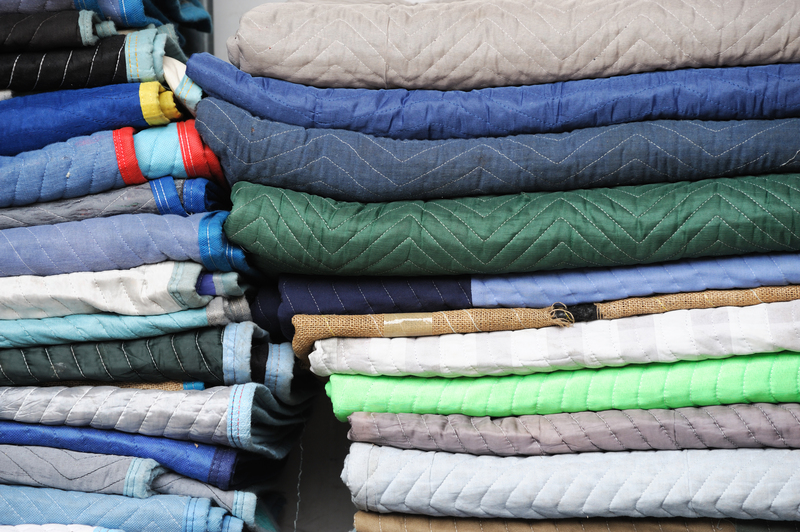Long-Term Sofa Storage: Expert Tips You Need
Posted on 07/06/2025
Long-Term Sofa Storage: Expert Tips You Need
Storing a sofa for the long-haul may not seem complicated, but safeguarding your beloved furniture from dust, pests, moisture, and damage calls for strategic preparation. This comprehensive guide reveals expert long-term sofa storage tips every homeowner should know.

Why Consider Long-Term Sofa Storage?
Homeowners often find themselves in need of sofa storage solutions during a move, home renovation, extended travel, or when downsizing. Without proper care, even high-end sofas can suffer from warping, mold, or fabric damage over time. Knowing the correct way to store your favorite sofa ensures it stays in pristine condition, ready for use once you retrieve it.
Main Risks of Poor Sofa Storage
- Dust and dirt accumulation causing stains and odors
- Moisture damage leading to mold and mildew growth
- Pest invasion from rodents or insects
- Structural deformation such as sagging or warped frames
- Faded or discolored upholstery due to sunlight or improper wrapping
How to Prepare Your Sofa for Storage
Proper preparation is the first and most crucial step in long-term sofa storage. Skipping this stage can risk irreversible damage. Below are the expert steps to ready your furniture for months (or years!) in storage.
1. Clean Your Sofa Thoroughly
Cleaning the sofa removes dust, pet hair, and oils that can attract pests or foster mold. Here's how to clean different types of sofas before storage:
- Fabric sofas: Vacuum thoroughly, including under cushions and in crevices. Spot-clean with an upholstery-safe cleaner and let it dry completely.
- Leather sofas: Wipe with a damp cloth and apply leather conditioner to prevent cracking.
- Microfiber sofas: Use a brush or vacuum, spot clean stains with a mild solution, and let it air dry.
2. Disassemble When Possible
If your sofa has detachable legs, arms, or cushions, remove them to save space and prevent accidental breakage. Store all screws and small parts in a labeled bag attached to the sofa frame. Disassembled sofas are less likely to warp during long-term storage.
3. Protect with the Right Materials
Using the correct wrapping will shield your sofa from dust and damage. Avoid plastic directly on upholstery--it can trap moisture and cause mildew.
- Use furniture blankets, cotton sheets, or specialized covers to let your sofa breathe.
- Wrap wooden or metal legs with bubble wrap.
- Cover all detachable cushions separately in fabric bags for air circulation.
4. Choose Proper Storage Conditions
A key aspect of long-term couch storage is the environment. Extremes in temperature or humidity can severely damage furniture.
- Climate-controlled storage units are best. They keep humidity and temperature fluctuates in check and are ideal for wood, fabric, or leather sofas.
- Avoid storing sofas in basements or garages prone to dampness, insects, or flood risk.
Expert Tips for Storing a Couch Long-Term
Here's what the pros suggest when it comes to extended sofa storage:
Tip 1: Elevate Your Sofa
Always lift your sofa off the ground with pallets or plywood boards. This protects it from cold floors, accidental spills, or flooding.
Tip 2: Ventilation is Crucial
Never wrap your couch too tightly or use airtight plastic. Proper air circulation stops condensation and mold.
Tip 3: Regularly Check Your Storage Space
Schedule periodic visits to inspect your storage unit. Look for early signs of pests, mold, or moisture buildup, and address them quickly.
Tip 4: Avoid Direct Sunlight
Even in storage, sunlight exposure can cause fabric fading or leather cracking. Choose a unit or storage area away from windows or use blackout covers.
Tip 5: Keep Sofa Upright and Supported
Store the sofa in its normal position, never on its side or back. Place boxes or pads under sink-prone spots to maintain structure.
Pest Control for Long-Term Couch Storage
Rodents and insects seek out soft, warm places to nest--your sofa can quickly become a target if you're not careful. Here's how to protect your stored furniture:
- Clean storage units before moving your sofa in. Seal any visible cracks or openings.
- Avoid storing food or scented items in the same space; these attract pests.
- Place pest deterrents, such as natural cedar blocks or silica gel packs, inside and around your sofa.
Maintaining Upholstery During Extended Storage
Various sofa materials require specific care for long-term couch preservation:
- Leather: Condition again every six months if possible. If not, thoroughly condition before storage to ensure lasting suppleness.
- Fabric: Remove cushions and wrap separately for better airflow. Use moth repellent sachets for natural fibers such as wool.
- Wood: A thin coating of furniture polish protects against drying out or swelling.
Note: Never use harsh chemicals or bleach products on upholstered furniture before storage--they can break down fibers over time.
Choosing the Best Storage for Your Sofa
Not all storage units are equal. Here's what to look for when storing your sofa long-term:
- Climate control (humidity and temperature regulation)
- Secure access and good surveillance
- Clean, dry environment with solid flooring
- Easy accessibility for routine checks
- Proper ventilation
Storing at home? An interior, unused room will work if it's away from damp, heat, or sunlight, and you can maintain airflow.
How to Move Your Sofa to Storage Safely
Moving is a vulnerable moment for your furniture. To prevent damage:
- Lift, don't drag to avoid leg or frame damage.
- Use moving straps and get help--sofas are heavy and awkward!
- Cushion corners and armrests with protectors.
- Transport in a covered truck or van during dry weather if possible.

Common Questions About Long-Term Sofa Storage
How long can a sofa be stored without damage?
With correct storage preparation and a climate-controlled space, sofas can be safely stored for years. However, periodic maintenance is key.
Is it okay to store a sofa vertically?
No. Storing sofas upright or on one end can cause internal components to settle unevenly, damaging shape and support. Always store flat and upright as you would use it.
Can I wrap my sofa in plastic for long-term storage?
Never wrap a sofa directly in plastic! It seals in moisture and triggers mold. Only use breathable covers like cotton or wool.
What is the best way to keep pests away?
In addition to a clean, sealed unit, deterrents like cedar chips and silica gel packs can help. Avoid any food storage nearby, and check periodically.
Final Thoughts: The Value of Proper Long-Term Sofa Storage
Your sofa is more than just seating--it's comfort and style combined. Taking the right steps to protect your sofa during long-term storage is well worth the effort. Stay diligent about cleaning, wrapping with breathable materials, and choosing a stable environment.
- Clean thoroughly and dry before storage
- Disassemble carefully and cover parts separately
- Choose climate-controlled storage for long durations
- Use cotton or furniture blankets--not plastic--for wrapping
- Elevate off the ground and allow ventilation
- Check on your sofa periodically
Following these expert long-term sofa storage tips means your cherished couch will look--and feel--as good as new after you bring it back into your home. Investing a little time now prevents costly repairs or replacement later.
Your Sofa Deserves the Best!
Effective couch storage preserves a central piece of your living space for years to come. By applying these expert recommendations, you'll ensure your sofa remains in top condition--no matter how long you're apart.
For more furniture storage insights and expert advice, check our other storage and moving articles!
